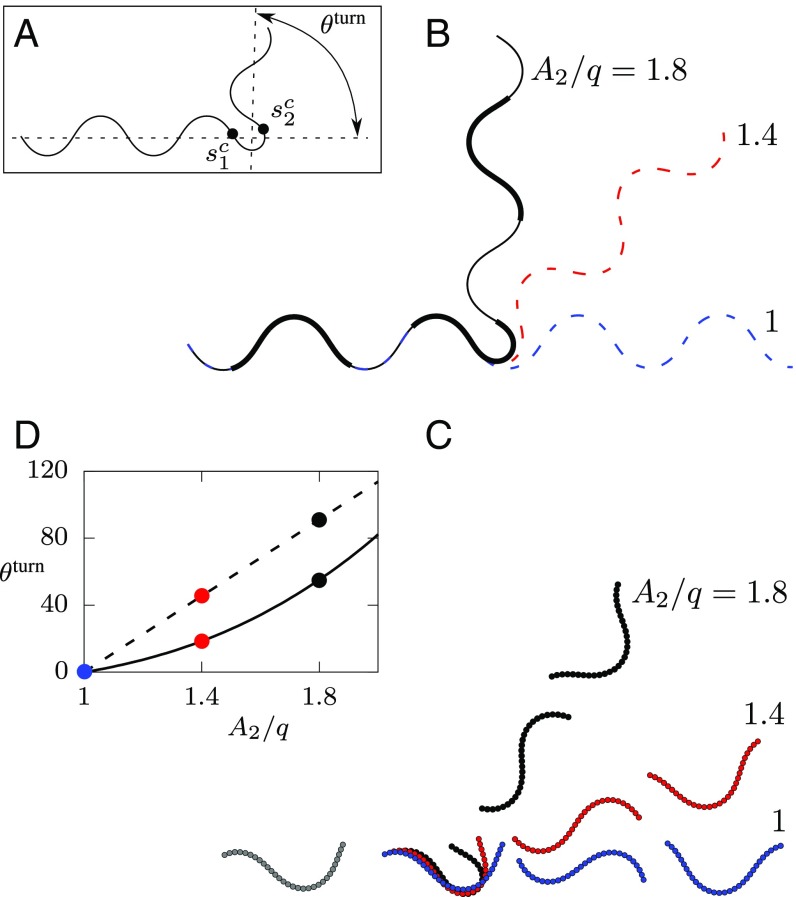Fig. 7.
Effectiveness of three-mode planar turns in crawling/burrowing and swimming. (A) Definition of the turn angle and positions of the turn mode-switching points and for the PHC maneuvers shown. We use , , and default mode amplitude for all calculations shown. (B) Three-mode planar turn trajectories and snapshots of body postures (thick trail segments, ) for a nematode crawling/burrowing without transverse slip and with turning-mode amplitude as labeled. (C) A sequence of simulation snapshots of a swimming C-shaped nematode () performing a three-mode PHC turn, with the turning mode amplitude as labeled. (D) Comparison of the dependence of the turn angle (in degrees) on the turning-mode amplitude for motion without transverse slip (dashed line) and swimming (solid line). The three circles for each case correspond to the shown trajectories and snapshots.

